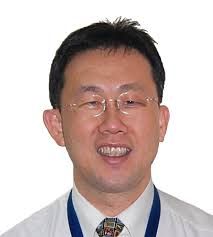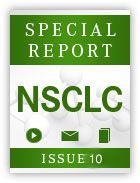Research Team Challenges Plant-Derived Molecule for the Treatment of NSCLC
A team from the Scripps Research Institute and Bristol-Myers Squibb recently collaborated to collectively develop a method for complete chemical synthesis of antroquinonol and to test the biologic activity of the chemically synthesized product. Contrary to previous reports, the study reported minimal in vitro and in vivo antitumor activity of chemically synthesized antroquinonol A.
Plant-Derived Molecule NSCLC Treatment

Miles Chih-Ming Chen, PhD
Natural products offer a rich source of chemical diversity for identifying novel drug candidates. Collectively, 34% of the medicines approved by the FDA are natural products or natural product-derivative small molecules.1Plant-derived molecules are highly valued and constitute close to 15% of the studies listed on ClinicalTrials.gov. Consequently, traditional medicinal plants used by different cultures have been a prime source of interest for drug discovery.
Antrodia camphorate(AC) is a rare, medicinal fungus that grows on a native Taiwan tree species and has been used as a traditional cancer preventative for many years. The key bioactive compound in AC, antroquinonol (antroquinonol A), a ubiquinone derivative, has already been identified, and Golden Biotech Corp. in Taiwan has a broad spectrum of production and treatment patents for the use of antroquinonol A and other compounds derived from AC.2
Based on extensive preclinical work, Golden Biotech is conducting a phase II clinical trial (in the United States and Taiwan) for the treatment of non-small cell lung cancer (NSCLC) and has been granted orphan drug status by the FDA for the treatment of pancreatic cancer and acute myeloid leukemia.
Trials are also under way for efficacy in treating diseases ranging from cancers of breast, prostate, skin, hepatocellular carcinoma (HCC), as well as autoimmune diseases.2After the completion of human clinical trials, antroquinonol will be marketed under the trade name Hocena.
A team from the Scripps Research Institute and Bristol-Myers Squibb (BMS) recently collaborated to collectively develop a method for complete chemical synthesis of antroquinonol and to test the biologic activity of the chemically synthesized product.
Contrary to previous reports, the study,Antroquinonol A: Scalable Synthesis and Preclinical Biology of a Phase II Drug Candidate, published recently in the American Chemistry Society’sCentral Sciencejournal, reported minimal in vitro and in vivo antitumor activity of chemically synthesized antroquinonol A. This is in contrast to the reported preclinical efficacy of the compound in a nude mouse model harboring human hepatoma xenografts.3
The authors of the study believe that their results may temper the enthusiasm surrounding the therapeutic potential of this natural product. If validated, this could have major impact not only on the future of antroquinonol and other derivatives of AC, but also on the overall marketing potential of traditional medicinal plants as a source for possible drugs.
On the other hand, numerous publications from Golden Biotech and other sources support preclinical efficacy of antroquinonol in activating autophagy and associated mode of cell death in cancer cells.4-6Targeted Oncologycontacted the two sides to identify and resolve the reasons underlying the contradictory results.
Members of the BMS team declined to comment further.
“Although the BMS study may have impact on the commercial development of antroquinonol in the near future, we should not ignore that other teams have also reported successful chemical synthesis of antroquinonol, and Weng and his team have already shown that synthesized antroquinonol works well in vitro and in vivo,”7-9said Miles Chih-Ming Chen, PhD, head, division of clinical medicine, Golden Biotechnology Corp.
Miles suggested that further studies might be required to reevaluate the bioactivity of the BMS team’s synthesized antroquinonol using assay conditions similar to previous studies. “Slight differences in experimental conditions, such as generation of cell line, culture media, media with or without serum, method of measurement, etc, may account for the differences,” Miles suggested. “Factors such as mice strain, tumor size, and stages may also result in different results in mice xenograft model.”
“Our previous study results indicate that antroquinonol blocks Ras/Rho signaling pathway via the inhibition of protein isoprenyltransferase activity in cancer cells and it is inferred that effectiveness of antroquinonol is possibly associated with therasgene mutation status in cancer cells,” said Miles.4
This criterion is being used in the ongoing phase II clinical trial for antroquinonol to enroll patients with KRAS-positive and KRAS-negative NSCLC. “… BMS teams recent publication on antroquinonol A, however, does not consider this perspective,” added Miles.
Fang Jim-Min, a collaborator from the department of chemistry, National Taiwan University, weighed in by saying that the Baran/BMS study "might challenge the previous work of Golden Biotech and may impact the processes of clinical trials, FDA approval, and commercial development.”
"The results of biological experiments may vary due to different practices and conditions," he cautioned . "Although the study has correctly assigned chemical structure to antroquinonol A, it’s not assigned to its isomers. Furthermore, the trans stereoselectivity in the alkylation reaction, forming compound 14 in the BMS study, is different from their own previous observation on alkylation of compound 12 to product 8 predominating incisisomer. This discrepancy in stereochemistry may come from the structures of reactants having different acetal protecting groups (monocyclic and bicyclic substrates may prefer different conformations) or come from different reaction conditions, for example, with or without cosolvent of HMPA."
Additionally, the BMS study has focused on initial metabolites. Since antroquinonol has extensively metabolized products as reported in rat urine, the additional metabolites might have some role in the observed discrepancies.10
Guh Jih-Hwa, School of Pharmacy, National Taiwan University, another Golden Biotech collaborator and the corresponding author of two studies quoted by the BMS study, added, “We have tested antroquinolol isolated fromAntrodia camphoratein standard SRB assay.
The compound displayed varied activities in different HCC cell lines, showing the highest activity in Hep G2 cells and less activity in Hep 3B cells with half maximal inhibitory concentration (IC50) more than 30 uM. Our SRB assay is different from MTT assay used in the other study. Additionally, there are differences between the assessments and incubation conditions, which might explain some differences."
Overall, the study from the BMS team will challenge not only the previous work of Golden Biotech, but might affect the re-emergence of natural products and traditional medicinal plants as major players in the field of drug discovery.
References
- Newman DJ, Cragg GM. Natural products as sources of new drugs over the 30 years from 1981 to 2010.J Nat Prod. 2012;75(3):311335.
- Golden Biotech. http://www.goldenbiotech.com.tw/en/index.html.
- Villaume MT, Sella E, Saul G, et al. Antroquinonol A: Scalable synthesis and preclinical biology of a phase 2 drug candidate.ACS Cent Sci. 2015; doi:10.1021/acscentsci.5b00345.
- Ho CL, Wang JL, Lee CC, et al. Antroquinonol to block Ras and Rho signaling via the inhibition of protein isoprenyltransferase activity in cancer cells.Biomed Pharmacother. 2014;68(8):1007-1014.
- Yu CC, Chiang PC, Lu PH, et al. Antroquinonol, a natural ubiquinone derivative, induces a cross talk between apoptosis, autophagy and senescence in human pancreatic carcinoma cells.J Nutr Biochem. 2012;23:900-907.
- Chiang PC, Lin SC, Pan SL, et al. Antroquinonol displays anticancer potential against human hepatocellular carcinoma cells: a crucial role of AMPK and mTOR pathways.Biochem Pharmacol. 2010;79:162-171.
- Sulake RS, Chen C. Total synthesis of (+)-antroquinonol and (+)-antroquinonol D.Org Lett. 2015;6;17(5):1138-1141.
- Hsu CS, Chou HH, Fang JM. A short synthesis of (±)-antroquinonol in an unusual scaffold of 4-hydroxy-2-cyclohexenone.Org Biomol Chem. 2015;21;13(19):5510-5519.
- Thiyagarajan V, Tsai M-J, Weng C-F. Antroquinonol targets FAK-signaling pathway suppressed cell migration, invasion, and tumor growth of C6 glioma.PLoS One. 2015;10(10):e0141285.
- Chen CK, Kang JJ, Wen WC, et al. Metabolites of antroquinonol found in rat urine following oral administration.J Nat Prod. 2014;77(4):1061-1064.

Gasparetto Explains Rationale for Quadruplet Front Line in Transplant-Ineligible Myeloma
February 22nd 2025In a Community Case Forum in partnership with the North Carolina Oncology Association, Cristina Gasparetto, MD, discussed the CEPHEUS, IMROZ, and BENEFIT trials of treatment for transplant-ineligible newly diagnosed multiple myeloma.
Read More